From time to time we are contacted by engineering students who are interested in doing their final degree project with us.
In this case, Carlos del Río contacted us through Guillermo García Alfonsín, professor of “Data analysis and acquisition in race cars” at the MBA in Motorsport Engineering at Nebrija University. Surely you know Guillermo because he is also the alma mater of the YouTube channel “PowerArt” that has dedicated a few videos to the projects we carry out at Bottpower.
Carlos was interested in carrying out a project related to additive manufacturing (which we usually know from 3D printing), and I proposed to him to design a topologically optimized fork using Altair software, thinking about the possibility of printing it (for example in titanium), so that we had a design to replace the current Morlaco fork, which I designed 20 years ago when I was inexperienced and which is clearly oversized.
So we finally agreed that Carlos would carry out his project on this topic. The final title of the project is “Design of a suspension fork by generative design”.
The first thing Carlos did was analyze the current fork of the Morlaco, using it as a starting point.
From there Carlos began to work on topologically optimized designs.
As a working hypothesis of the loads that take place on the fork, we used telemetry data from a 1000 cc motorcycle running on the Cheste circuit, in Valencia.
The first designs were somewhat bizarre and oversized.
But little by little the design got closer to the fork that you can see in the following images.
The interesting thing about building a 3D printed fork is that we can play with many factors: the diameter of the tubes, the thickness of the walls that can be variable, and even in some areas “lattice” type structures can be included inside of the tubes to be able to adjust the stiffness of the fork in different planes and areas.
The design is not 100% finished yet, but we are already at a pretty good point. We will continue working on it and we will keep you informed.
Many thanks to Carlos for the work he has carried out and to Guillermo for helping the project to be carried out and for being co-director of it! 🙂
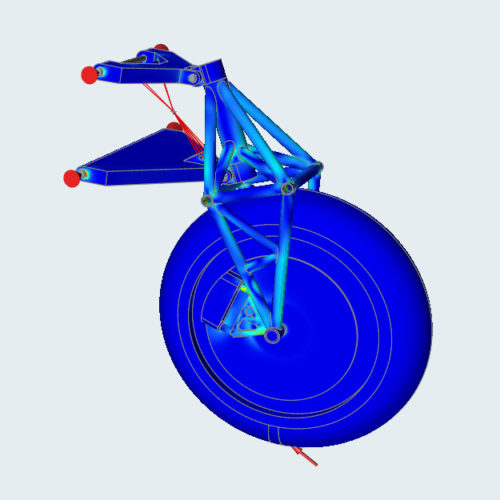
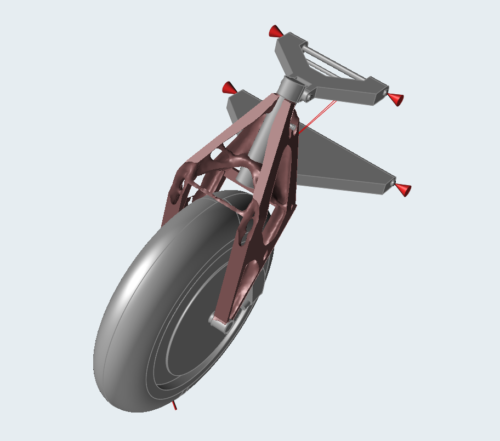
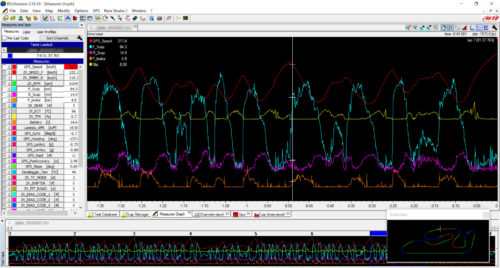
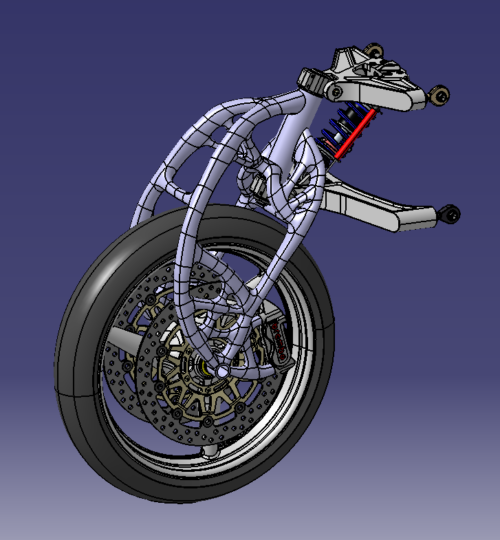
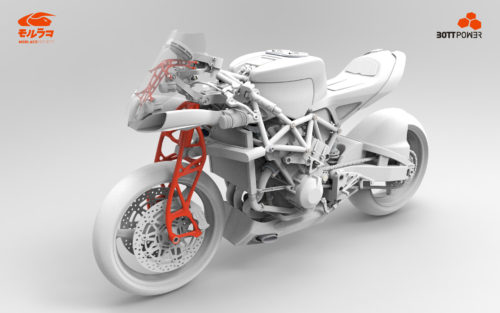
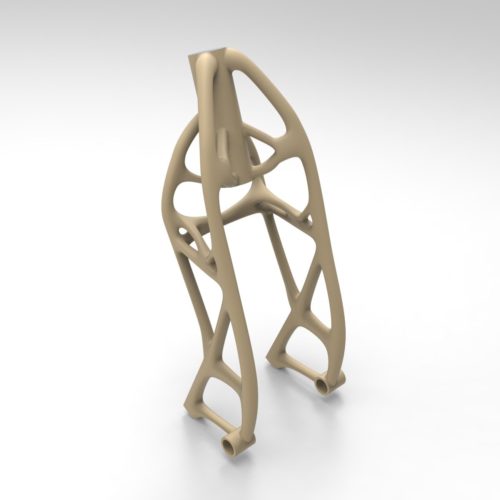
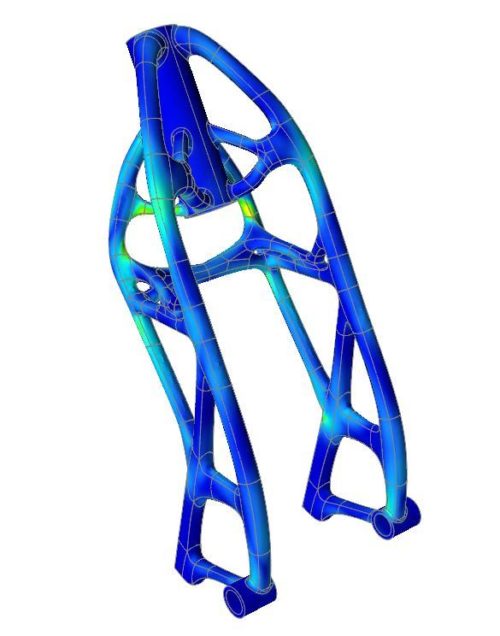
Buenas, en los casos de diseños estructurales que deban soportar cargas cíclicas hacen que la impresión 3D en metal aún no sea una solución factible. La resistencia a fatiga de estos materiales no son optimas para este tipo de diseños. Pero el diseño topológico sí que es factible para otro tipo de fabricaciones que contempla Altair. Un saludo.
Hola Vicente. Muchas gracias por tu comentario. 🙂
Estoy de acuerdo contigo, pero cada día vemos más y más ejemplos de aplicaciones de piezas metálicas con funciones estructurales impresas en 3D.
Lógicamente esto no es algo que pueda hacerse a la ligera, pero con ensayos, teniendo un buen control de la pieza, etc., sí que creo que se pueden hacer cosas interesantes.
¡Un saludo!